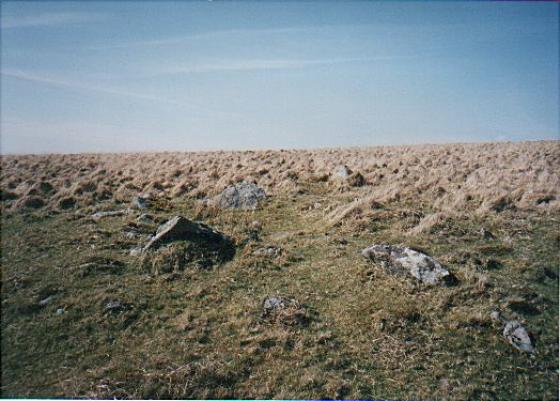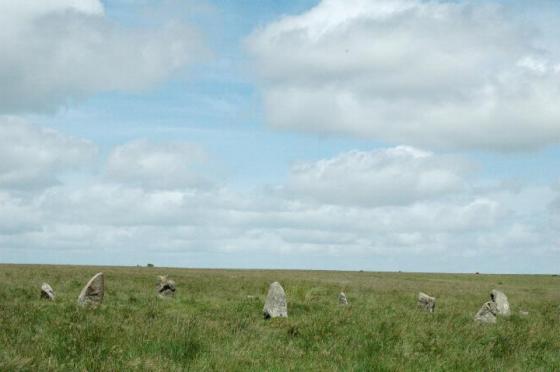Information about the row from Pastscape, including the possibility that it terminated at Hobajons Cross, rather than the Longstone on Piles Hill.
“( SX 65635880 – SX 65526037) Stone Row (NR) (1)
A stone row extending from a barrow on Butterdon Hill (SX 65 NE 66) to Hobajons Cross (SX 66 SE 58 a standing stone at SX
65516047). The row formerly extended north from Hobajons Cross to the Longstone (a standing stone at SX 65436074) on Piles Hill,
but this stretch was destroyed in 1803 (see SX 66 SE 107).
Also in 1803 stones split by the tare and feather method were introduced into the row, when the alignment was accepted as the boundary between Harford and Langford Lester Moors.(2)(3)
The northern part of the Butterdon stone row has been surveyed from Hangershell Rocks cairn at SX 65645941 to Hobajons Cross
at SX 65506045.
For the 1050m of this part the majority of the several hundred stones are from 0.1m to 0.4m high and form an irregular line. There is a gap of 70.0m on the north side of Hangershell but otherwise the row is fairly continuous. The area is not entirely free of natural surface stones and while some can be immediately discounted occasionally there is a short double or triple row
where all the stones are alike and these which formed the original row cannot now be determined. Barely two dozen stones
are 0.5m high or higher, Hobajons Cross at 1.2m being the highest. It is possible that this was at some stage a terminal stone since it appears to have cup marks on the south face and the extension onwards, to the Longstone, is on an entirely different alignment.”
hhttps://www.pastscape.org.uk/hob.aspx?hob_id=441148


























































































































































































































